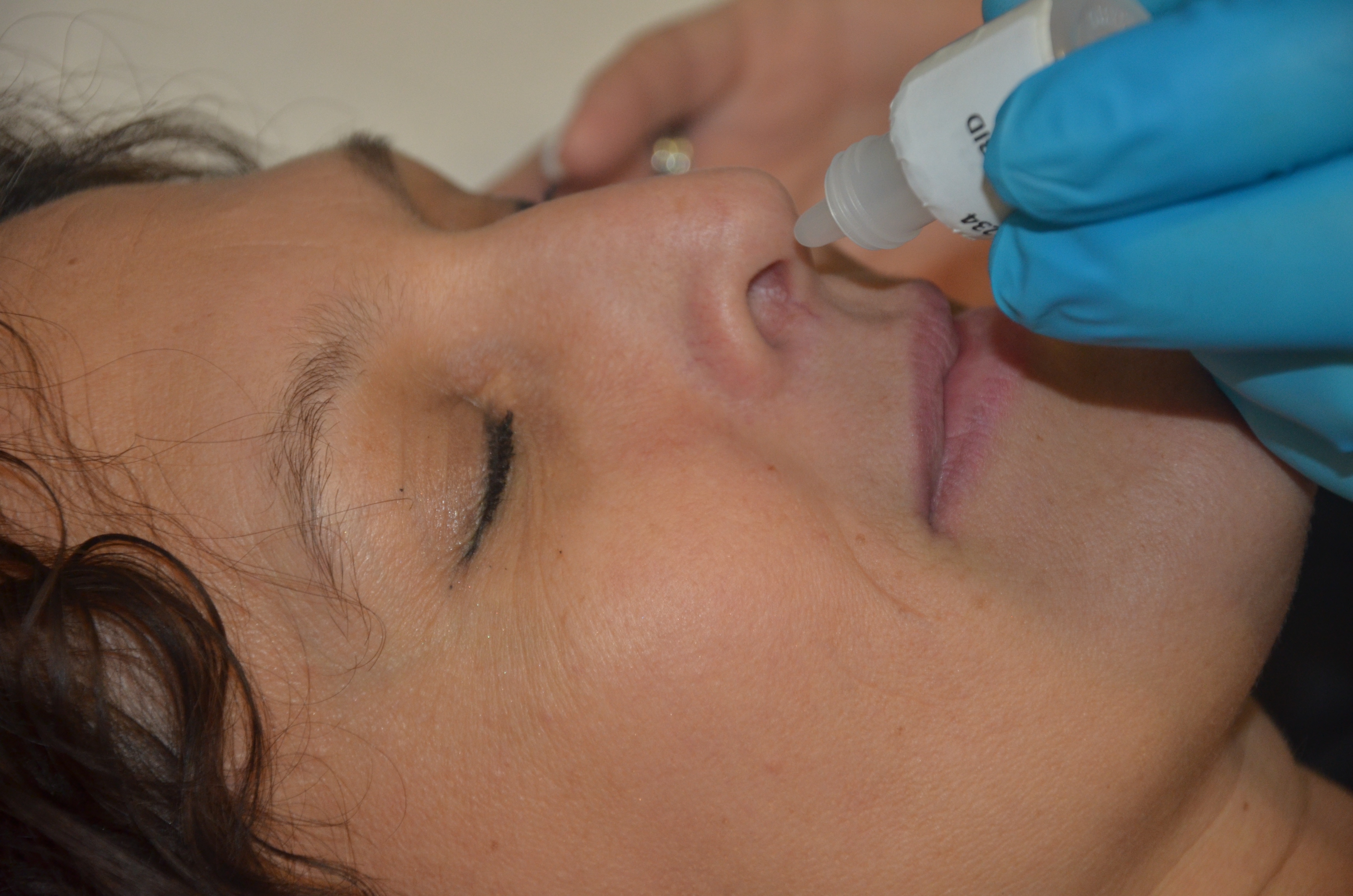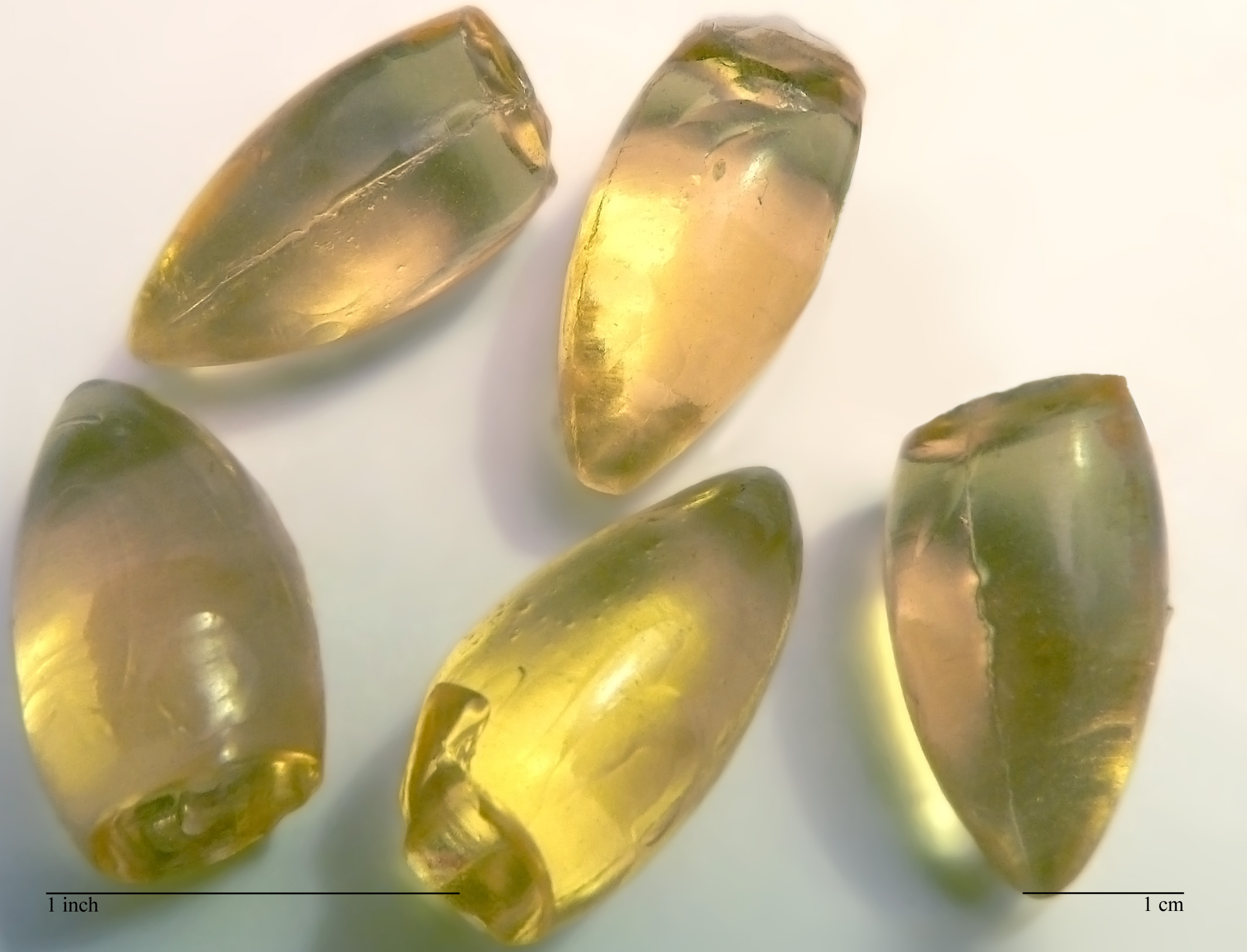|
Diclofenac
Diclofenac, sold under the brand name Voltaren among others, is a nonsteroidal anti-inflammatory drug (NSAID) used to treat pain and inflammatory diseases such as gout. It can be taken orally (swallowed by mouth), inserted rectally as a suppository, injected intramuscularly, injected intravenously, applied to the skin topically, or through eye drops. Improvements in pain last up to eight hours. It is also available as the fixed-dose combination diclofenac/misoprostol (Arthrotec) to help protect the stomach; however, proton pump inhibitors such as omeprazole are typically first-line since they are at least as effective as misoprostol, but with better tolerability. Common side effects include abdominal pain, gastrointestinal bleeding, nausea, dizziness, headache, and swelling. Serious side effects may include heart disease, stroke, kidney problems, and stomach ulceration. Use is not recommended in the third trimester of pregnancy. It is likely safe during breast ... [...More Info...] [...Related Items...] OR: [Wikipedia] [Google] [Baidu] |
Nonsteroidal Anti-inflammatory Drug
Non-steroidal anti-inflammatory drugs (NSAID) are members of a Indication (medicine), therapeutic drug class which Analgesic, reduces pain, Anti-inflammatory, decreases inflammation, Antipyretic, decreases fever, and Antithrombotic, prevents blood clots. Side effects depend on the specific drug, its dose and duration of use, but largely include an increased risk of Stomach ulcers, gastrointestinal ulcers and bleeds, heart attack, and kidney disease. The term ''non-steroidal'', common from around 1960, distinguishes these drugs from corticosteroids, another class of anti-inflammatory drugs, which during the 1950s had acquired a bad reputation due to overuse and side-effect problems after their introduction in 1948. NSAIDs work by inhibiting the activity of cyclooxygenase enzymes (the COX-1 and COX-2 isozyme, isoenzymes). In cells, these enzymes are involved in the synthesis of key biological mediators, namely prostaglandins, which are involved in inflammation, and thromboxanes, ... [...More Info...] [...Related Items...] OR: [Wikipedia] [Google] [Baidu] |
Diclofenac/misoprostol
Diclofenac/misoprostol, sold under the brand name Arthrotec, is a fixed-dose combination medication that contains: *Diclofenac sodium: Nonsteroidal anti-inflammatory drug (NSAID) with analgesic properties *Misoprostol: Gastrointestinal (GI) mucosal protective prostaglandin E1 analog. In the United Kingdom it is marketed by Pharmacia and it is indicated for prophylaxis against NSAID-induced gastroduodenal ulceration in people requiring diclofenac for rheumatoid arthritis or osteoarthritis. The American College of Rheumatology and a Canadian consensus report both recommend GI-protective agents such as misoprostol be combined with long term NSAID therapy and a review concluded that diclofenac/misoprostol is a cost effective treatment in patients requiring long term NSAID therapy who are at increased risk of developing gastropathy. Contraindications Arthrotec must not be taken during pregnancy, as it may deform or otherwise harm the fetus, or lead to miscarriage. This may be acco ... [...More Info...] [...Related Items...] OR: [Wikipedia] [Google] [Baidu] |
UGT2B7
UGT2B7 (UDP-Glucuronosyltransferase-2B7) is a phase II metabolism isoenzyme found to be active in the liver, kidneys, epithelial cells of the lower gastrointestinal tract and also has been reported in the brain. In humans, UDP-Glucuronosyltransferase-2B7 is encoded by the ''UGT2B7'' gene. Function The UGTs serve a major role in the conjugation and subsequent elimination of potentially toxic xenobiotics and endogenous compounds. UGT2B7 has unique specificity for 3,4- catechol estrogens and estriol, suggesting that it may play an important role in regulating the level and activity of these potent estrogen metabolites. This enzyme is located on the endoplasmic reticulum and nuclear membranes of cells. Its function is to catalyse the conjugation of a wide variety of lipophilic aglycon substrates with glucuronic acid, using uridine diphosphate glucuronic acid. Together with UGT2B4, UGT2B7 is capable of glucosidation of hyodesoxycholic acid in the liver, but, unlike the ... [...More Info...] [...Related Items...] OR: [Wikipedia] [Google] [Baidu] |
CYP2C9
Cytochrome P450 family 2 subfamily C member 9 (abbreviated CYP2C9) is an enzyme protein. The enzyme is involved in the metabolism, by oxidation, of both xenobiotics, including drugs, and endogenous compounds, including fatty acids. In humans, the protein is encoded by the ''CYP2C9'' gene. The gene is highly polymorphic, which affects the efficiency of the metabolism by the enzyme. Function CYP2C9 is a crucial cytochrome P450 enzyme, which plays a significant role in the metabolism, by oxidation, of both xenobiotic and endogenous compounds. CYP2C9 makes up about 18% of the cytochrome P450 protein in liver microsomes. The protein is mainly expressed in the liver, duodenum, and small intestine. About 100 therapeutic drugs are metabolized by CYP2C9, including drugs with a narrow therapeutic index such as warfarin and phenytoin, and other routinely prescribed drugs such as acenocoumarol, tolbutamide, losartan, glipizide, and some nonsteroidal anti-inflammatory drugs. By contra ... [...More Info...] [...Related Items...] OR: [Wikipedia] [Google] [Baidu] |
Topical Medication
A topical medication is a medication that is applied to a particular place on or in the body. Most often topical medication means application to body surface area, body surfaces such as the skin or mucous membranes to treat ailments via a large range of classes including Cream (pharmaceutical), creams, foams, gels, lotions, and ointments. Many topical medications are epicutaneous, meaning that they are applied directly to the skin. Topical medications may also be insufflation (medicine), inhalational, such as asthma medications, or applied to the surface of tissues other than the skin, such as eye drops applied to the conjunctiva, or ear drops placed in the ear, or medications applied to the surface of a Human tooth, tooth. The word ''topical'' derives from Ancient Greek, Greek wikt:τοπικός, τοπικός ''topikos'', "of a place". Justification Topical drug delivery is a route of administering drugs via the Human skin, skin to provide topical therapeutic effects. As sk ... [...More Info...] [...Related Items...] OR: [Wikipedia] [Google] [Baidu] |
Proton-pump Inhibitor
Proton-pump inhibitors (PPIs) are a class of medications that cause a profound and prolonged reduction of gastric acid, stomach acid production. They do so by irreversibly inhibiting the stomach's H+/K+ ATPase, H+/K+ ATPase proton pump. The body eventually synthesizes new proton pumps to replace the irreversibly inhibited ones, a process driven by normal cellular turnover, which gradually restores acid production. Proton-pump inhibitors have largely superseded the H2-receptor antagonist, H2-receptor antagonists, a group of medications with similar effects but a different mode of action, and heavy use of antacids. A potassium-competitive acid blocker (PCAB) revaprazan was marketed in Korea as an alternative to a PPI. A newer PCAB vonoprazan with a faster and longer lasting action than revaprazan, and PPIs has been marketed in Japan (2013), Russia (2021), and the US (2023). PPIs are among the most widely sold medications in the world. The class of proton-pump inhibitor medication ... [...More Info...] [...Related Items...] OR: [Wikipedia] [Google] [Baidu] |
Fixed-dose Combination
A combination drug is a combination of two or more pharmaceutical drugs as active ingredients combined into a single dosage form, typically as a ''fixed-dose combination'', with each constituent standardized to specifications of a fixed dose. Fixed-dose combinations are mass-produced and mass marketed, intended to serve as a near universal treatment for a large patient population with diverse medical histories, conditions, predisposition thereof, and treatment requirements. A '' polypill'' is a pharmacy or capsule containing four or more active ingredients, often needing to be compounded at a specialized pharmacy in order to satisfy the specifications of a patient's personalized prescription and treatment plan, including dosage form, medicinal dosing, and/or mechanism of release. Polypills encompass approved prescription drugs and over the counter drugs, at times including nutritional supplements, amino acids, vitamins, minerals, and hormones. Fixed-dose combination drugs ... [...More Info...] [...Related Items...] OR: [Wikipedia] [Google] [Baidu] |
Intravenous Injection
Intravenous therapy (abbreviated as IV therapy) is a medical technique that administers fluids, medications and nutrients directly into a person's vein. The intravenous route of administration is commonly used for rehydration or to provide nutrients for those who cannot, or will not—due to reduced mental states or otherwise—consume food or water by mouth. It may also be used to administer medications or other medical therapy such as blood products or electrolytes to correct electrolyte imbalances. Attempts at providing intravenous therapy have been recorded as early as the 1400s, but the practice did not become widespread until the 1900s after the development of techniques for safe, effective use. The intravenous route is the fastest way to deliver medications and fluid replacement throughout the body as they are introduced directly into the circulatory system and thus quickly distributed. For this reason, the intravenous route of administration is also used for the consump ... [...More Info...] [...Related Items...] OR: [Wikipedia] [Google] [Baidu] |
Intramuscular Injection
Intramuscular injection, often abbreviated IM, is the medical injection, injection of a substance into a muscle. In medicine, it is one of several methods for parenteral, parenteral administration of medications. Intramuscular injection may be preferred because muscles have larger and more numerous blood vessels than subcutaneous tissue, leading to faster absorption than subcutaneous injection, subcutaneous or intradermal injections. Medication administered via intramuscular injection is not subject to the first-pass metabolism effect which affects oral medications. Common sites for intramuscular injections include the deltoid muscle of the upper arm and the gluteal muscle of the buttock. In infants, the vastus lateralis muscle of the thigh is commonly used. The injection site must be cleaned before administering the injection, and the injection is then administered in a fast, darting motion to decrease the discomfort to the individual. The volume to be injected in the muscle is ... [...More Info...] [...Related Items...] OR: [Wikipedia] [Google] [Baidu] |
Urine
Urine is a liquid by-product of metabolism in humans and many other animals. In placental mammals, urine flows from the Kidney (vertebrates), kidneys through the ureters to the urinary bladder and exits the urethra through the penile meatus (males) or urethral meatus of the vulva (females) during urination. In other vertebrates, urine is excreted through the cloaca. Urine contains water-soluble by-products of Cell (biology), cellular metabolism that are rich in nitrogen and must be clearance (medicine), cleared from the Circulatory system, bloodstream, such as urea, uric acid and creatinine. A urinalysis can detect nitrogenous wastes of the mammalian body. Urine plays an important role in the earth's nitrogen cycle. In balanced ecosystems, urine fertilizes the soil and thus helps plants to grow. Therefore, Reuse of excreta, urine can be used as a fertilizer. Some animals use it to territory (animal)#Scent marking, mark their territories. Historically, aged or fermented urine (kn ... [...More Info...] [...Related Items...] OR: [Wikipedia] [Google] [Baidu] |
Suppository
A suppository is a dosage form used to deliver pharmaceutical drug, medications by insertion into a body orifice (any opening in the body), where it dissolves or melts to exert local or systemic effects. There are three types of suppositories, each to insert into a different sections: rectal suppositories into the rectal administration, rectum, vaginal suppositories into the Intravaginal administration, vagina, and urethral suppositories into the Urethra#Male, urethra of a male. Suppositories are ideal for infants, elderly individuals and post-operative patients, who are unable to swallow oral medications, and for individuals experiencing severe nausea and/or vomiting. Suppositories are administered through rectal route to reduce onset time of reaction. Composition Several different ingredients can be used to form the base of a suppository: cocoa butter or a similar substitute, polyethylene glycol, Gel#Hydrogels, hydrogels, and glycerinated gelatin. The type of material used depen ... [...More Info...] [...Related Items...] OR: [Wikipedia] [Google] [Baidu] |




